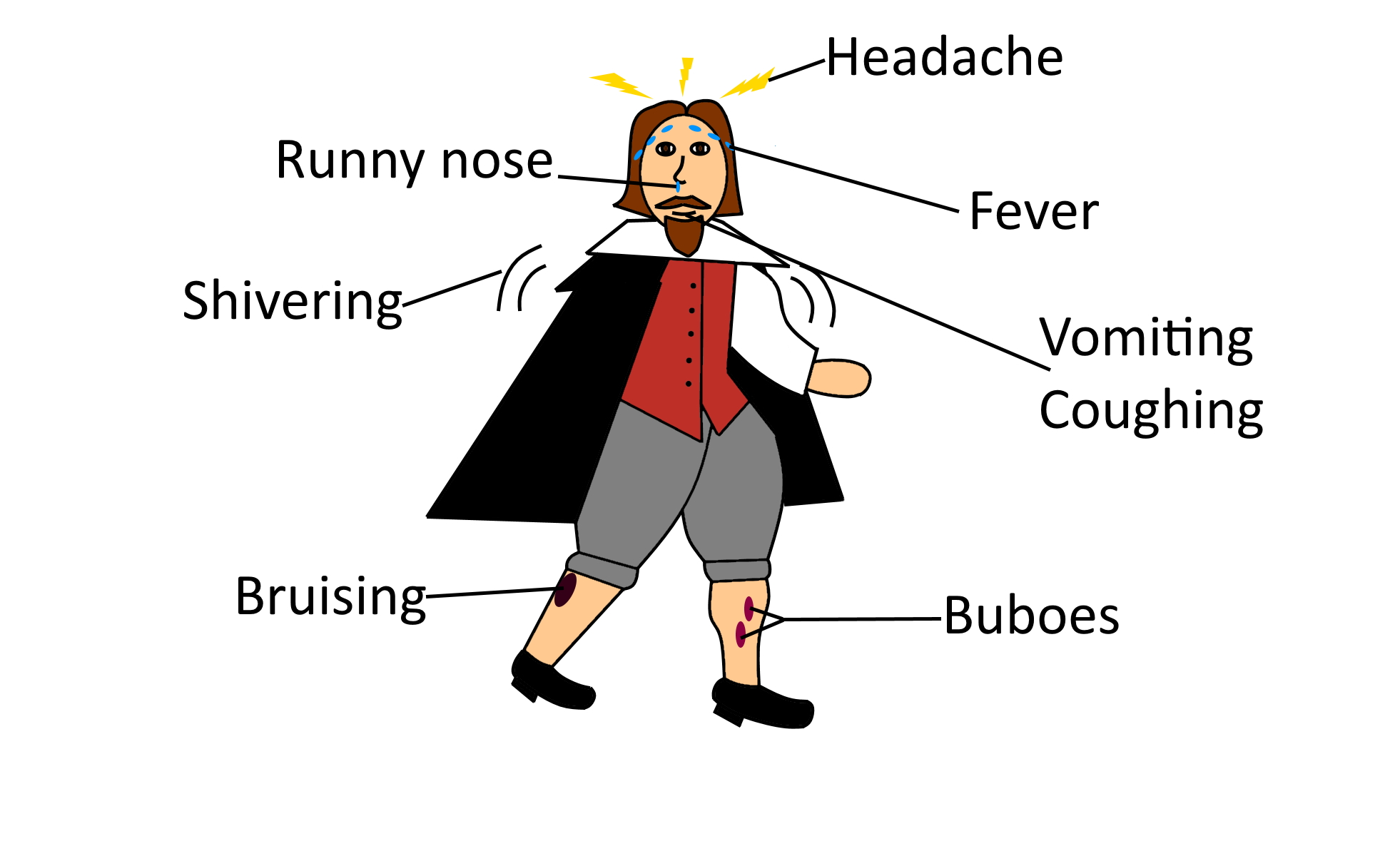Symptoms of the Plague
The first signs that someone has the Bubonic Plague are usually a runny nose, fever and a headache. These are quickly followed by shivering and vomiting. ‘Buboes’ are swellings caused by pus filling up the glands. These can appear all over the body, though they are most common in the armpits and groin. Sometimes, large bruises also appear on the skin. If the Yersinia Pestis bacteria infects the lungs, this can cause coughing and bleeding from the lungs. This is called ‘Pneumonic Plague’. People who develop Pneumonic Plague can pass the disease on through coughing and sneezing.

Symptom match-up:
William Boghurst was an apothecary who treated victims of the plague in London during the Great Plague of 1665. He wrote a book on the plague called Loimographia, or, An experimental relation of the plague, although this this was not published at the time. In this, Boghurst described the symptoms of the plague, based on his own observations and other published works. Some of the symptoms Boghurst described are listed below. Can you match these to the symptoms in the diagram above?
- ‘Much sweating and sometimes difficulty of sweating’.
- ‘Shuddering cold at first falling sick’.
- ‘Spots appearing, either coal black, dark blueish black, purple, cleare blood-red colour, or scarlet’.
- ‘Frequent vomiting, or at least retching to vomit’.
- ‘Carbuncles, buboes, blaines, blisters, spotts rising on the body’.
- ‘Headache, dizziness and lightness of the head’.
- ‘Shortness and difficulty of breathing as if they were choked’.
- ‘Running nose or ears’.
